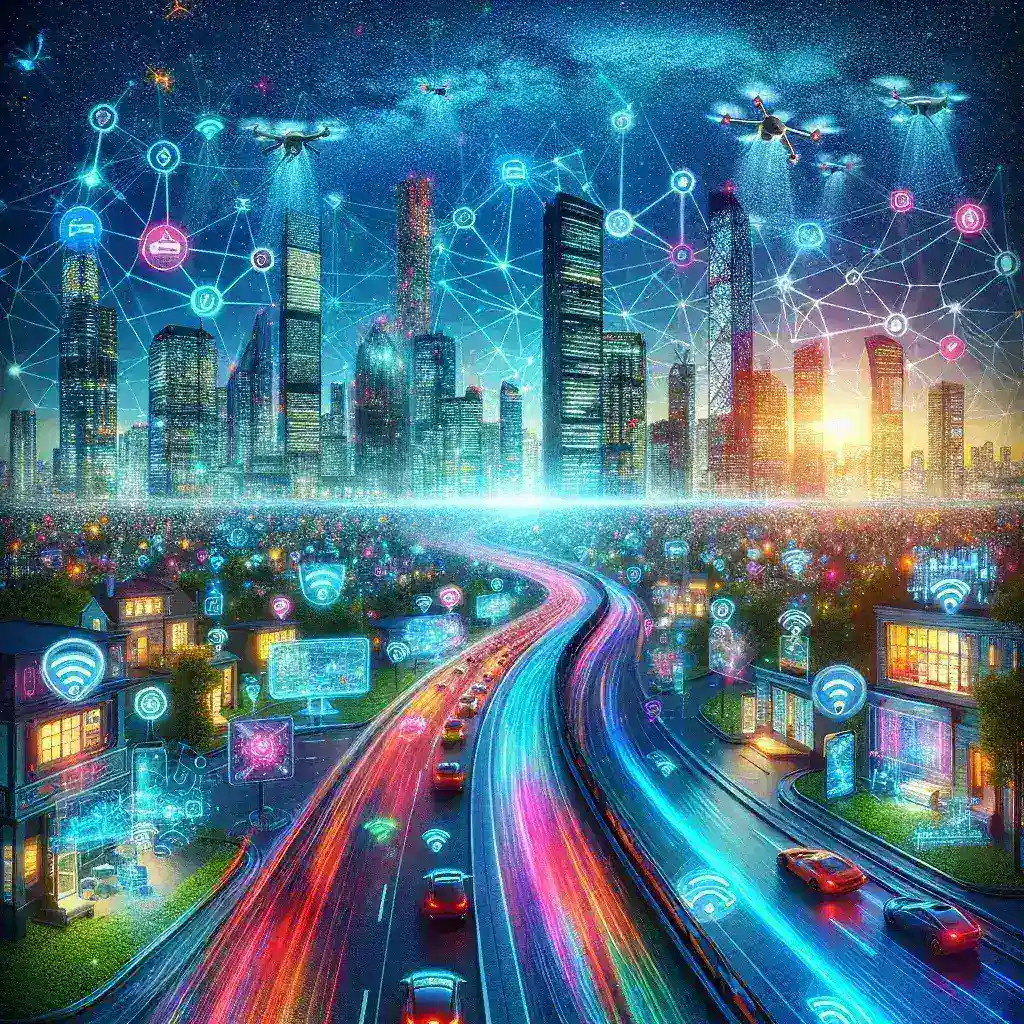The advent of 5G technology is revolutionizing various sectors, and one of the most prominent areas experiencing significant transformation is the Internet of Things (IoT). The synergy between 5G and IoT paves the way for advancements that promise unprecedented speed, reliability, and efficiency. This article delves into the profound impact of 5G on IoT development, highlighting key areas where this fifth-generation network catalyzes progress.
Enhanced Speed and Bandwidth
One of the hallmark features of 5G technology is its substantially faster data transfer speeds, which can reach up to 10 Gbps. This speed is a game-changer for IoT devices that often require rapid data transmission for optimal performance. Increased bandwidth not only supports more devices simultaneously but also ensures that data is transferred seamlessly and without delay.
Real-Time Data Processing
With 5G, real-time data processing becomes more efficient. IoT applications in sectors like healthcare, transportation, and manufacturing benefit immensely from this. For instance, in healthcare, real-time data from wearable devices can be transmitted quickly to medical professionals, enabling instantaneous analysis and timely interventions.
High-Definition Video Streaming
IoT devices often incorporate video streaming features. The enhanced bandwidth and speed provided by 5G ensure that these devices can stream high-definition video without buffering, which is particularly beneficial for security cameras, smart home devices, and remote monitoring systems.
Reduced Latency
Latency, or the delay before a transfer of data begins following an instruction, is significantly reduced with 5G technology. 5G networks boast latencies as low as 1 millisecond, compared to the 20-30 milliseconds typical of 4G networks. This reduction is critical for IoT applications that require near-instantaneous response times.
Autonomous Vehicles
In the realm of autonomous vehicles, low latency is essential. Vehicles equipped with IoT sensors and systems must process data in real-time to navigate safely and efficiently. 5G enables these vehicles to communicate with each other and with traffic management systems almost instantaneously, improving safety and reducing the likelihood of accidents.
Industrial Automation
For industrial automation to reach its full potential, reduced latency is crucial. IoT devices in smart factories rely on fast and reliable communication to manage robotic systems, monitor equipment, and control production lines. 5G’s low latency facilitates smoother and more precise operations, leading to increased productivity and reduced downtime.
Greater Device Connectivity
5G technology supports a higher density of connected devices per square kilometer, which is a significant improvement over previous generations. This is particularly important for IoT ecosystems that involve a vast number of interconnected devices.
Smart Cities
The development of smart cities heavily relies on the ability to connect numerous IoT sensors and devices spread across large areas. 5G provides the necessary infrastructure to support these connections, enabling smarter traffic management, energy distribution, and public safety systems.
Agricultural IoT
In agriculture, IoT devices monitor soil conditions, weather patterns, and crop health. The higher device connectivity offered by 5G allows for more comprehensive data collection and analysis, helping farmers make informed decisions that optimize yield and resource use.
Improved Energy Efficiency
Another significant advantage of 5G for IoT development is improved energy efficiency. 5G networks are designed to consume less power than their predecessors, which is beneficial for battery-operated IoT devices.
Long-Life Sensors
IoT sensors deployed in remote or hard-to-reach areas benefit from the extended battery life made possible by 5G’s energy efficiency. This means that devices can operate longer without needing frequent maintenance or battery replacements, which can be both costly and logistically challenging.
Sustainable Smart Homes
In smart homes, energy-efficient IoT devices contribute to lower power consumption, reducing overall household energy costs and the environmental footprint. 5G enables these devices to perform optimally while conserving energy.
Conclusion
The impact of 5G on IoT development is profound and multifaceted. From enhanced speed and bandwidth to significantly reduced latency, greater device connectivity, and improved energy efficiency, 5G technology is unlocking new possibilities for IoT applications across various sectors. As 5G continues to roll out globally, its benefits will become increasingly evident, driving innovation and efficiency in the interconnected world of IoT.

